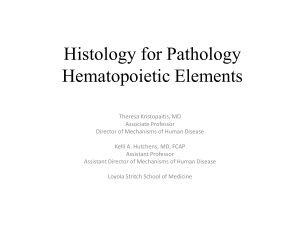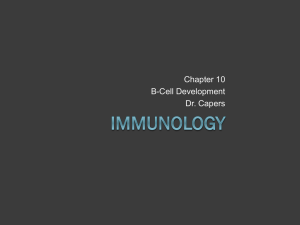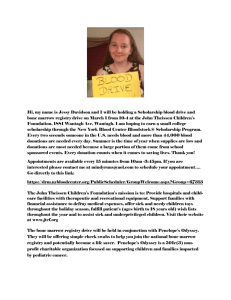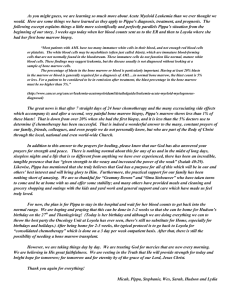Lab1student
advertisement
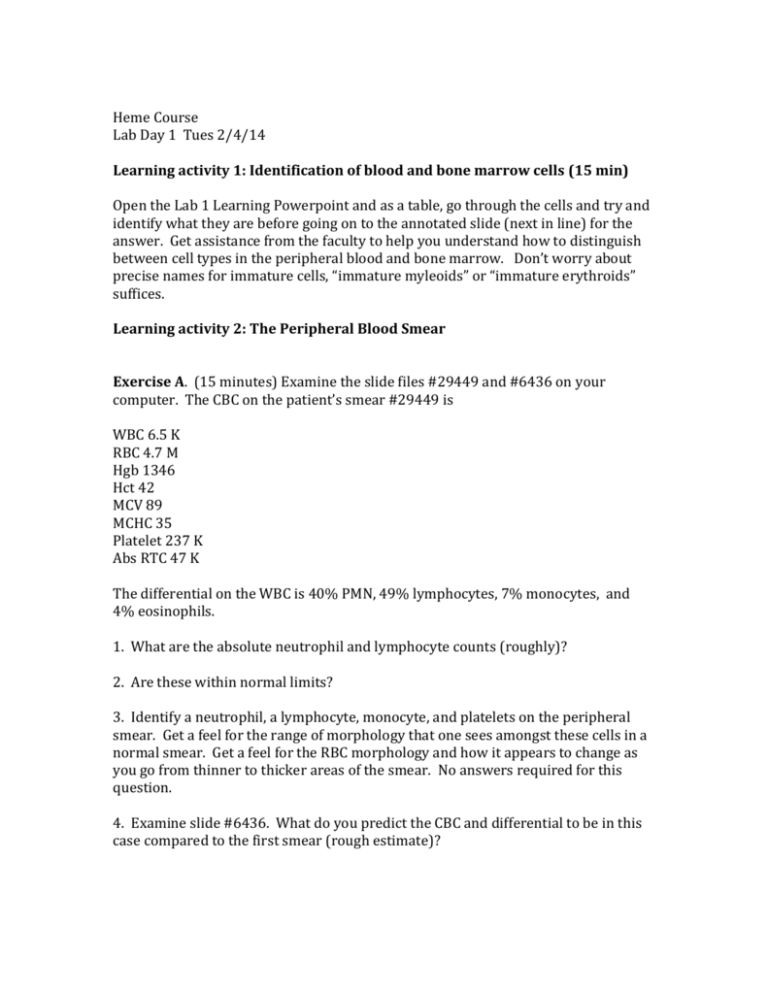
Heme Course Lab Day 1 Tues 2/4/14 Learning activity 1: Identification of blood and bone marrow cells (15 min) Open the Lab 1 Learning Powerpoint and as a table, go through the cells and try and identify what they are before going on to the annotated slide (next in line) for the answer. Get assistance from the faculty to help you understand how to distinguish between cell types in the peripheral blood and bone marrow. Don’t worry about precise names for immature cells, “immature myleoids” or “immature erythroids” suffices. Learning activity 2: The Peripheral Blood Smear Exercise A. (15 minutes) Examine the slide files #29449 and #6436 on your computer. The CBC on the patient’s smear #29449 is WBC 6.5 K RBC 4.7 M Hgb 1346 Hct 42 MCV 89 MCHC 35 Platelet 237 K Abs RTC 47 K The differential on the WBC is 40% PMN, 49% lymphocytes, 7% monocytes, and 4% eosinophils. 1. What are the absolute neutrophil and lymphocyte counts (roughly)? 2. Are these within normal limits? 3. Identify a neutrophil, a lymphocyte, monocyte, and platelets on the peripheral smear. Get a feel for the range of morphology that one sees amongst these cells in a normal smear. Get a feel for the RBC morphology and how it appears to change as you go from thinner to thicker areas of the smear. No answers required for this question. 4. Examine slide #6436. What do you predict the CBC and differential to be in this case compared to the first smear (rough estimate)? 5. What are the major differences between the two slides? 6. What is a potential cause of these differences (we will discuss the details of the case as a group)? Exercise B: (10-15 minutes) Examine the slide #6343 (normal bone marrow aspirate) and slide #6000 (normal marrow biopsy). On the aspirate slide, identify some examples of the various stages of maturation and click “snapshots” of these to share with the class: Table 1: A “youngish” immature myeloid cell (promyelocyte/myelocyte) Table 2: An “oldish” immature myeloid cell (metamyelocyte/band form) Table 3: An immature erythroid cell Table 4: A megakaryocyte Table 5: A plasma cell 2. On the bone marrow biopsy slide identify megakaryocytes, erythroid precursors, and, if you are able, myeloid precursors and perhaps plasma cells. Get a sense of the architecture and heterogeneity of the normal bone marrow, with immature myeloid cells near the bone and mature neutrophils further away. Get a sense of the clustered or “island” architecture of the small, circular, and dark nuclei of the erythroid precursors. See if you can see small sinuses. Exercise C (5-8 minutes): Case Problem of the day: Open the Case Problem Powerpoint file. There are 3 different bone marrow aspirate and biopsies pictured, #s 1-3. Match them to the following appropriate case scenarios: Case A: A 25 year old student has volunteered to be a bone marrow donor during a signup drive at his workplace for a coworker with acute leukemia who needs a bone marrow transplant and turns out to be a good match. He is treated with G-CSF in order to increase his hematopoietic stem cell numbers for donation. Case B: A 3 year old girl presents with petechiae on her lower legs and is found to be pancytopenic. Her blood counts were normal 8 months ago at a well child check. Case C: A 25 year old professional bicycle racer presents to the team doctor with a headache. A CBC shows a hematocrit of 74%. Learning Activity 3 (15 minutes) Quiz (non-graded): Open the Hemelab 1 Quiz Powerpoint. Identify the cells pictured in categories similar to those we used at the beginning of class. To submit your group answers, create a Word Document titled “Quiz Day 1”, with your Room number and Table number. List out the answers, 1-10. When finished, save document to your desktop (eg Quiz1.2272.table4.doc)and then deposit file in the Upload folder on the H Drive in the appropriate sub-folder. If you save directly to these folders it does not work.

